OSIRIS-REX ARCHIVAL DOCUMENTATION IMAGING
These image data are research-grade, high-resolution precision photography for archival documentation of the sample returned to Earth from the asteroid Bennu by the OSIRIS-REx Mission. The images are produced by the Advanced Imaging & Visualization of Astromaterials (AIVA) team members Erika Blumenfeld (Creative Lead), Joseph Aebersold (Project Lead), and Christopher Snead (Civil Servant Lead). Blumenfeld is a Transdisciplinary Artist, Photographer, and Researcher as well as a Conservation & Imaging Specialist. Aebersold is an Image Scientist and 3D Imagery Analyst. Snead is the Deputy Sample Curator of OSIRIS-REx, as well as the Hayabusa2 Sample Curator and the Small Particle Lead.
Archival documentation is the first step in any conservation practice with imagery being a means to observe and understand the sample before any scientific analysis is performed. The images can be used in preliminary scientific analysis through image science techniques. Every effort is made to produce images that provide the highest possible image quality we can achieve with a methodical approach to maintain scientific consistency and accuracy. However, due to the highly unusual techniques necessary for imaging within NASA's stringent cleanroom protocols, which have been established to keep the sample pristine for research and posterity, these image data have certain limitations that are important to understand in order to properly analyze and interpret the images.
Description of Imaging Procedure:
AIVA imagery is created using manual high-resolution precision photography (HRPP) and a semi-automated focus stacking procedure. Our process involves the use of a medium format camera system with a full-frame 102-Megapixel sensor and an array of lenses. In all our imaging procedures, the sample must remain inside of a cleanroom nitrogen glovebox cabinet that is made of highly reflective materials and where all our camera and lighting equipment must always be outside of the cabinet. Our goal is to achieve extreme detail in the sample regions, yet the constraints we work within mean we are essentially doing macro photography at telephoto distances, with limited range of motion around the sample, through small windows of glass, and imaging into a mirrored box.
To achieve heightened focus detail across the entire image-scene, we use a focus stacking procedure, where our final products are made from hundreds of images, each with extremely small areas of focus in the field of view. In our post-imaging processing procedures, we work with the full stacks simultaneously in RAW format and manually apply brightness, density, color, and optimization to balance the images in equal measure. Then, we use an automated blending algorithm to process the image stack with additional manual adjustments to reduce processing artifacts and to reveal data that may be otherwise obscured by the software.
The goal of these image data is to provide as much detail in the sample regions as possible to benefit science and research objectives for current and future investigators and the general public. The sample – the rocks and particles from the asteroid Bennu – is overall extremely dark, almost blackish in tone, with areas of very high luster and reflective particles. We process the data to pull out extreme detail in the rocks and particles and therefore the sample will appear lighter in the imagery than it does in real life.
Limitations of Data:
Extremely restrictive requirements necessary to maintain the pristine condition of the sample result in conditions unconducive to imaging. Every effort is taken to mitigate lighting, reflection, shadow, depth of field, vibration, color casting, and other environmental conditions working against perfect images. However, it is not always possible to eliminate the occurrence of these issues within a cleanroom environment. The resulting data is our best attempt to balance imaging artefacts and maintain scientific accuracy while showing as much detail of the sample as reasonably possible.
| Initial imaging of Canister Lid and TAGSAM on Avionics Deck (Sequence A): | ||||
 View of avionics deck, TAGSAM, & open canister lid within glovebox Related Samples: OREX-108001-0 OREX-107001-0 |
 View of TAGSAM and open canister lid Related Samples: OREX-107001-0 |
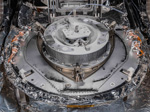 View of avionics deck and TAGSAM Related Samples: OREX-108001-0 |
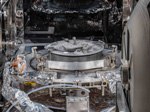 View of avionics deck and TAGSAM. Canister lid is moved within glovebox Related Samples: OREX-108001-0 OREX-107001-0 |
 View of avionics deck and TAGSAM Related Samples: OREX-108001-0 |
 View of avionics deck and TAGSAM Related Samples: OREX-108001-0 |
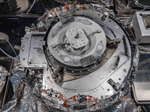 View of avionics deck and TAGSAM Related Samples: OREX-108001-0 |
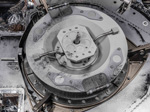 View of avionics deck and TAGSAM Related Samples: OREX-108001-0 |
 Overhead view of entire avionics deck and TAGSAM Related Samples: OREX-108001-0 |
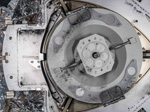 Overhead view of entire avionics deck and TAGSAM Related Samples: OREX-108001-0 |
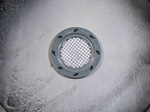 Filter within canister lid Related Samples: OREX-103001-0 OREX-107001-0 |
 Detail of fines on avionics deck Related Samples: OREX-108001-0 |
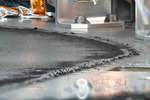 Detail of fines on avionics deck Related Samples: OREX-108001-0 |
 Detail of fines on avionics deck Related Samples: OREX-108001-0 |
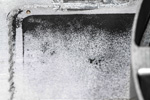 Detail of fines on avionics deck Related Samples: OREX-108001-0 |
| Expanded Imaging of Canister Lid and TAGSAM on Avionics Deck (Sequence A-6): | ||||
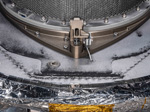 View of avionics deck and capture ring retaining latch. Related Samples: OREX-108001-0 |
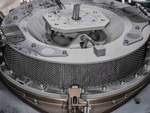 View of TAGSAM within capture ring Related Samples: OREX-106001-0 |
 View of avionics deck and edge of TAGSAM in capture ring Related Samples: OREX-108001-0 OREX-106001-0 |
 View of TAGSAM within capture ring, wrist plate and partial batwing Related Samples: OREX-106001-0 |
 View of avionics deck and edge of TAGSAM in capture ring Related Samples: OREX-108001-0 OREX-106001-0 |
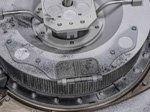 View of TAGSAM within capture ring, wrist plate, batwing, witness plates Related Samples: OREX-108001-0 OREX-106001-0 |
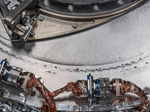 View of avionics deck and edge of TAGSAM in capture ring Related Samples: OREX-108001-0 |
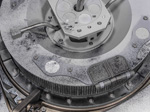 View of TAGSAM within capture ring, wrist plate, batwing, witness plates Related Samples: OREX-106001-0 |
 View of avionics deck and capture ring retaining latch. Related Samples: OREX-108001-0 OREX-106001-0 |
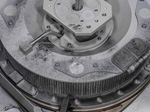 View of TAGSAM within capture ring, wrist plate and partial batwing Related Samples: OREX-106001-0 |
 View of avionics deck , tombstone, and edge of TAGSAM in capture ring Related Samples: OREX-108001-0 |
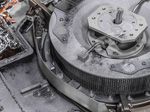 View of avionics deck , tombstone, partial batwings and wrist plate; TAGSAM in capture ring Related Samples: OREX-108001-0 |
 View of avionics deck , tombstone, and edge of TAGSAM in capture ring Related Samples: OREX-108001-0 |
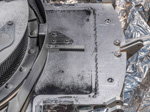 View of avionics deck , tombstone, and edge of TAGSAM in capture ring Related Samples: OREX-108001-0 |
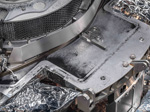 View of avionics deck , tombstone, and edge of TAGSAM in capture ring Related Samples: OREX-108001-0 |
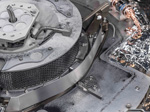 View of avionics deck, TAGSAM, & open canister lid within glovebox Related Samples: OREX-108001-0 |
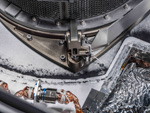 View of avionics deck, TAGSAM, & open canister lid within glovebox Related Samples: OREX-108001-0 |
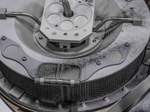 View of avionics deck, TAGSAM, & open canister lid within glovebox Related Samples: OREX-108001-0 |
 View of avionics deck, TAGSAM, & open canister lid within glovebox Related Samples: OREX-108001-0 OREX-106001-0 |
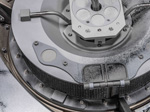 View of avionics deck, TAGSAM, & open canister lid within glovebox Related Samples: OREX-106001-0 |
 View of avionics deck and edge of TAGSAM in capture ring Related Samples: OREX-108001-0 OREX-106001-0 |
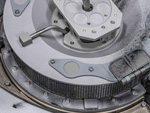 View of TAGSAM within capture ring, wrist plate and partial batwing Related Samples: OREX-106001-0 |
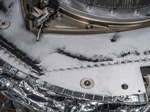 View of avionics deck and edge of TAGSAM in capture ring Related Samples: OREX-108001-0 OREX-106001-0 |
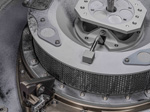 View of avionics deck, partial batwings and wrist plate; TAGSAM in capture ring Related Samples: OREX-108001-0 |
|
| TAGSAM has been flipped, this hardware came in direct contact with Bennu (Sequence B): | ||||
| There are 24 contact pads on the surrounding ring. Bennu material rests on the deflector cone. | ||||
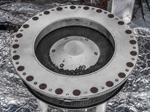 Full view of TAGSAM and contact pads within retaining ring Related Samples: OREX-110000-0 |
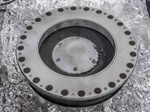 Full view of TAGSAM and contact pads within retaining ring Related Samples: OREX-110000-0 |
 Full view of TAGSAM and contact pads within retaining ring Related Samples: OREX-110000-0 |
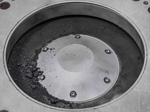 View of bulk material on deflector cone Related Samples: OREX-112001-0 |
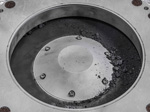 View of bulk material on deflector cone Related Samples: OREX-112001-0 |
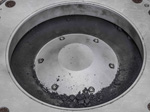 View of bulk material on deflector cone Related Samples: OREX-112001-0 |
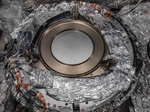 Capture ring in the avionics deck Related Samples: OREX-106001-0 OREX-108001-0 |
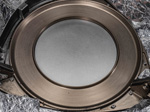 Close up view of capture ring Related Samples: OREX-106001-0 |
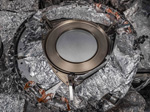 Capture ring in the avionics deck Related Samples: OREX-106001-0 OREX-108001-0 |
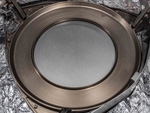 Close up view of capture ring Related Samples: OREX-106001-0 |
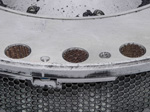 Edge of unopened TAGSAM and three contact pads, CP 1 is in center, CP2 is to the right, CP24 is to the left Related Samples: OREX-401000-0 OREX-404000-0 OREX-470000-0 |
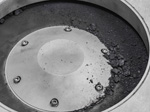 View of bulk material on deflector cone Related Samples: OREX-112001-0 |
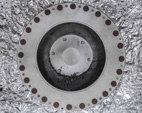 Overhead view of TAGSAM and contact pads within retaining ring Related Samples: OREX-110000-0 |
 Overhead view of TAGSAM and contact pads within retaining ring Related Samples: OREX-110000-0 |
 Overhead view of capture ring in the avionics deck Related Samples: OREX-106001-0 OREX-108001-0 |
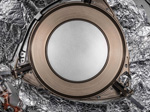 Close up overhead view of capture ring in the avionics deck Related Samples: OREX-106001-0 OREX-108001-0 |
||||
| Expanded Imaging of TAGSAM with Contact Pads (Sequence D): | ||||
 Overhead view of contact pad 1 within retaining ring Related Samples: OREX-401000-0 OREX-110000-0 |
 Side view of contact pad 1 within retaining ring Related Samples: OREX-401000-0 OREX-110000-0 |
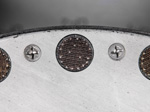 Overhead view of contact pad 2 within retaining ring Related Samples: OREX-404000-0 OREX-110000-0 |
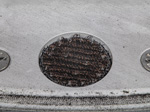 Side view of contact pad 2 within retaining ring Related Samples: OREX-404000-0 OREX-110000-0 |
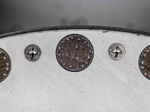 Overhead view of contact pad 3 within retaining ring Related Samples: OREX-407000-0 OREX-110000-0 |
 Side view of contact pad 3 within retaining ring Related Samples: OREX-407000-0 OREX-110000-0 |
 Overhead view of contact pad 4 within retaining ring Related Samples: OREX-410000-0 OREX-110000-0 |
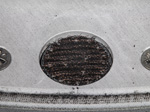 Side view of contact pad 4 within retaining ring Related Samples: OREX-410000-0 OREX-110000-0 |
 Overhead view of contact pad 5 within retaining ring Related Samples: OREX-413000-0 OREX-110000-0 |
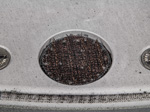 Side view of contact pad 5 within retaining ring Related Samples: OREX-413000-0 OREX-110000-0 |
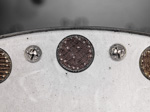 Overhead view of contact pad 6 within retaining ring Related Samples: OREX-416000-0 OREX-110000-0 |
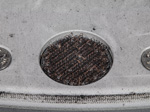 Side view of contact pad 6 within retaining ring Related Samples: OREX-416000-0 OREX-110000-0 |
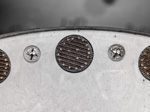 Overhead view of contact pad 7 within retaining ring Related Samples: OREX-419000-0 OREX-110000-0 |
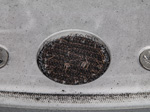 Side view of contact pad 7 within retaining ring Related Samples: OREX-419000-0 OREX-110000-0 |
 Overhead view of contact pad 8 within retaining ring Related Samples: OREX-422000-0 OREX-110000-0 |
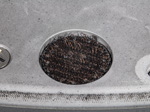 Side view of contact pad 8 within retaining ring Related Samples: OREX-422000-0 OREX-110000-0 |
 Overhead view of contact pad 9 within retaining ring Related Samples: OREX-425000-0 OREX-110000-0 |
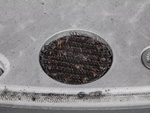 Side view of contact pad 9 within retaining ring Related Samples: OREX-425000-0 OREX-110000-0 |
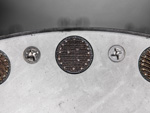 Overhead view of contact pad 10 within retaining ring Related Samples: OREX-428000-0 OREX-110000-0 |
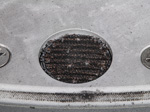 Side view of contact pad 10 within retaining ring Related Samples: OREX-428000-0 OREX-110000-0 |
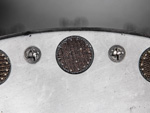 Overhead view of contact pad 11 within retaining ring Related Samples: OREX-431000-0 OREX-110000-0 |
 Side view of contact pad 11 within retaining ring Related Samples: OREX-431000-0 OREX-110000-0 |
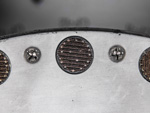 Overhead view of contact pad 12 within retaining ring Related Samples: OREX-434000-0 OREX-110000-0 |
 Side view of contact pad 12 within retaining ring Related Samples: OREX-434000-0 OREX-110000-0 |
 Overhead view of contact pad 13 within retaining ring Related Samples: OREX-437000-0 OREX-110000-0 |
 Side view of contact pad 13 within retaining ring Related Samples: OREX-437000-0 OREX-110000-0 |
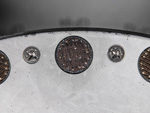 Overhead view of contact pad 14 within retaining ring Related Samples: OREX-440000-0 OREX-110000-0 |
 Side view of contact pad 14 within retaining ring Related Samples: OREX-440000-0 OREX-110000-0 |
 Overhead view of contact pad 15 within retaining ring Related Samples: OREX-443000-0 OREX-110000-0 |
 Side view of contact pad 15 within retaining ring Related Samples: OREX-443000-0 OREX-110000-0 |
 Overhead view of contact pad 16 within retaining ring Related Samples: OREX-446000-0 OREX-110000-0 |
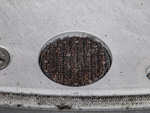 Side view of contact pad 16 within retaining ring Related Samples: OREX-446000-0 OREX-110000-0 |
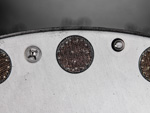 Overhead view of contact pad 17 within retaining ring Related Samples: OREX-449000-0 OREX-110000-0 |
 Side view of contact pad 17 within retaining ring Related Samples: OREX-449000-0 OREX-110000-0 |
 Overhead view of contact pad 18 within retaining ring Related Samples: OREX-452000-0 OREX-110000-0 |
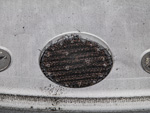 Side view of contact pad 18 within retaining ring Related Samples: OREX-452000-0 OREX-110000-0 |
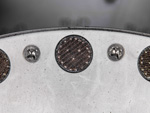 Overhead view of contact pad 19 within retaining ring Related Samples: OREX-455000-0 OREX-110000-0 |
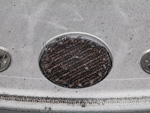 Side view of contact pad 19 within retaining ring Related Samples: OREX-455000-0 OREX-110000-0 |
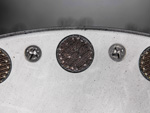 Overhead view of contact pad 20 within retaining ring Related Samples: OREX-458000-0 OREX-110000-0 |
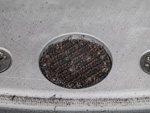 Side view of contact pad 20 within retaining ring Related Samples: OREX-458000-0 OREX-110000-0 |
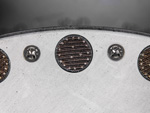 Overhead view of contact pad 21 within retaining ring Related Samples: OREX-461000-0 OREX-110000-0 |
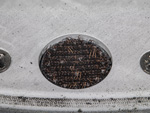 Side view of contact pad 21 within retaining ring Related Samples: OREX-461000-0 OREX-110000-0 |
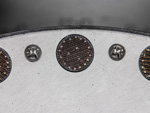 Overhead view of contact pad 22 within retaining ring Related Samples: OREX-464000-0 OREX-110000-0 |
 Side view of contact pad 22 within retaining ring Related Samples: OREX-464000-0 OREX-110000-0 |
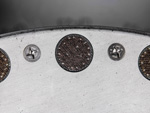 Overhead view of contact pad 23 within retaining ring Related Samples: OREX-467000-0 OREX-110000-0 |
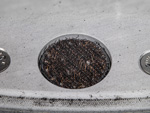 Side view of contact pad 23 within retaining ring Related Samples: OREX-467000-0 OREX-110000-0 |
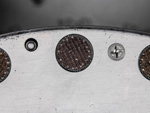 Overhead view of contact pad 24 within retaining ring Related Samples: OREX-470000-0 OREX-110000-0 |
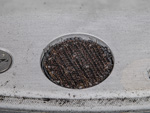 Side view of contact pad 24 within retaining ring Related Samples: OREX-470000-0 OREX-110000-0 |
||
| Expanded Imaging of Bulk Sample in TAGSAM (Sequence F, G, H, I, K): | ||||
 Overhead view of the opened TAGSAM head, bulk material rests on perf plate Related Samples: OREX-113001-0 |
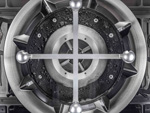 Overhead view of the opened TAGSAM head, bulk material rests on perf plate. The handling crossbar is installed for the pour into the baffle below Related Samples: OREX-113001-0 |
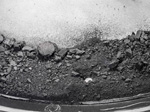 Side view of the bulk material on the perf plate. Related Samples: OREX-113001-0 |
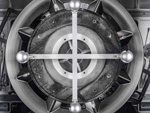 Overhead view of the opened TAGSAM head, bulk material rests on perf plate after the "pour" onto the baffle below. Related Samples: OREX-113001-0 |
 Overhead view of bulk material in four deep trays, the bulk material is from the TAGSAM interior Related Samples: OREX-800010-0 OREX-800011-0 OREX-800012-0 OREX-800013-0 |
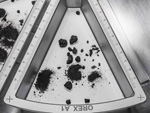 Overhead view of deep tray A1 Related Samples: OREX-800010-0 |
 Overhead edgewise view of deep tray A1 Related Samples: OREX-800010-0 |
 Overhead view of deep tray A2 Related Samples: OREX-800011-0 |
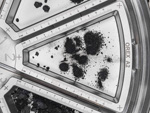 Overhead edgewise view of deep tray A2 Related Samples: OREX-800011-0 |
 Overhead view of deep tray A3 Related Samples: OREX-800012-0 |
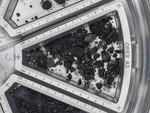 Overhead edgewise view of deep tray A3 Related Samples: OREX-800012-0 |
 Overhead view of deep tray A4 Related Samples: OREX-800013-0 |
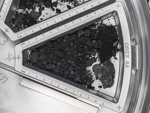 Overhead edgewise view of deep tray A4 Related Samples: OREX-800013-0 |
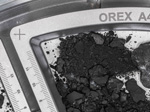 Close up view of the top left corner of deep tray A4 Related Samples: OREX-800013-0 |
 Close up view of the top right corner of deep tray A4 Related Samples: OREX-800013-0 |
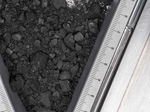 Close up view of the middle right section of deep tray A4 Related Samples: OREX-800013-0 |
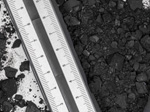 Close up view of the middle left section of deep tray A4 Related Samples: OREX-800013-0 |
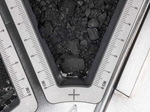 Close up view of the bottom corner of deep tray A4 Related Samples: OREX-800013-0 |
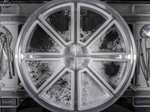 Overhead view of bulk material in four deep trays, the bulk material is the remaining sample from the TAGSAM interior after stubborn screw removal Related Samples: OREX-800001-0 OREX-800002-0 OREX-800003-0 OREX-800004-0 OREX-800005-0 OREX-800006-0 OREX-800007-0 OREX-800008-0 |
 Overhead view of bulk material in eight deep trays, the bulk material is the remaining sample from the TAGSAM interior after stubborn screw removal Related Samples: OREX-800001-0 OREX-800002-0 OREX-800003-0 OREX-800004-0 OREX-800005-0 OREX-800006-0 OREX-800007-0 OREX-800008-0 |
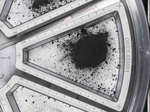 Overhead view of bulk material in deep tray OREX-800001-0 Related Samples: OREX-800001-0 |
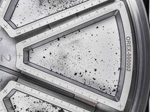 Overhead view of bulk material in deep tray OREX-800002-0 Related Samples: OREX-800002-0 |
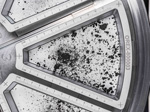 Overhead view of bulk material in deep tray OREX-800003-0 Related Samples: OREX-800003-0 |
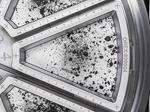 Overhead view of bulk material in deep tray OREX-800004-0 Related Samples: OREX-800004-0 |
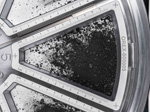 Overhead view of bulk material in deep tray OREX-800005-0 Related Samples: OREX-800005-0 |
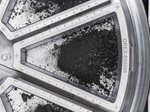 Overhead view of bulk material in deep tray OREX-800006-0 Related Samples: OREX-800006-0 |
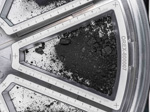 Overhead view of bulk material in deep tray OREX-800007-0 Related Samples: OREX-800007-0 |
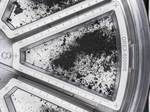 Overhead view of bulk material in deep tray OREX-800008-0 Related Samples: OREX-800008-0 |
||
